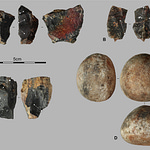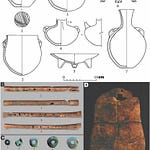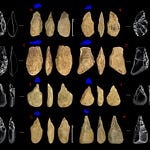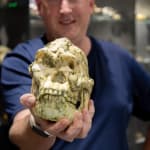The Case for Smoke Before Supper
For decades, archaeologists have debated the moment our ancestors learned to tame fire—and more importantly, why they did so. Cooking, the story often goes, sparked the evolution of Homo erectus by softening food, improving digestion, and freeing energy for bigger brains. But a new hypothesis is challenging that assumption with a cooler, smokier narrative: fire may have been kindled not for cooking, but for keeping meat safe.
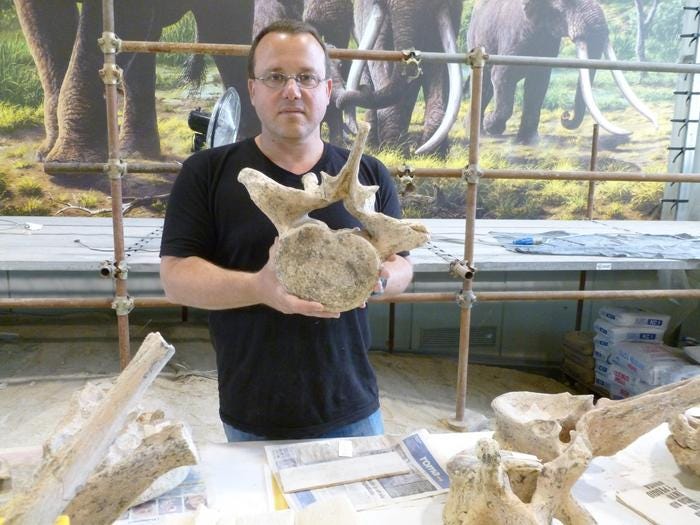
Published in Frontiers in Nutrition1, researchers Miki Ben-Dor and Ran Barkai argue that fire’s earliest use was tactical—a strategy for preserving large animal carcasses and warding off scavengers. Their theory, grounded in energetic analysis and Paleolithic archaeological evidence, repositions fire as an ecological adaptation tied to megafauna hunting, not a culinary revolution.
Hunting in the Pleistocene: High Risk, High Reward
During the Lower Paleolithic (1.9 to 0.78 million years ago), Homo erectus hunted animals that make today’s deer look like rabbits—elephants, hippos, buffalo. These hunts were risky and required coordination, but the payoff was immense.
“The meat and fat of a single elephant contain millions of calories,” Ben-Dor noted, “enough to feed a group of 25 for a month or more.”
Such "meat banks" were too large to consume in a day. Left exposed, they risked being spoiled by bacteria or stolen by hyenas, lions, and other carnivores. The logical solution? Fire—not to roast, but to protect and preserve.
Fires Not for Feasting, But for Fortifying
The researchers examined nine archaeological sites around the world—Israel, Kenya, Ethiopia, Spain—dating back as far as 1.9 million years. At every site where fire use is claimed, remains of massive herbivores were also present.
“These early sites consistently include large prey,” Barkai emphasized. “This suggests a pattern: where there was big game, there was often fire.”
Rather than rare or accidental, these fires may have served two critical roles:
Smoking and drying meat, to delay decay.
Deterring predators and scavengers, to protect the prize.
The Energy Economics of Fire
Using a bioenergetic model, the team compared the caloric returns from different food strategies. Hunting large prey in non-rainforest environments yielded over 16,000 calories/hour, dwarfing plant gathering (1,443 cal/hour) and even cooked plant foods (with modest gains of ~200–300 cal/hour).
Cooking meat added only about 1,200 calories/hour, mostly from enhanced digestibility. But that still couldn’t justify the effort of fire-making when compared to the benefits of preserving megafaunal meat over weeks.
“Preservation and protection offered higher energetic returns than cooking,” Ben-Dor concluded. “Early humans weren’t chefs—they were strategists.”
Fire as a Guardian, Not Just a Tool
Protecting a downed elephant wasn't just about calories. It was about safety. A partially consumed carcass would have been a beacon for predators. Fire could serve as a deterrent, and possibly a way to defend the kill without direct confrontation.
The authors suggest that this behavioral shift might also explain other evolutionary leaps—like the transition from arboreal sleeping to terrestrial rest, and eventually, the development of permanent home bases.
“This could have driven changes in cognition, social cooperation, and even brain size,” Barkai said.
Smoke Signals from the Deep Past
Cooking likely became a common use for fire once it was already in hand, but Ben-Dor and Barkai’s model casts early fire as a multipurpose innovation sparked by necessity, not culinary ambition.
This reframing challenges popular narratives about human evolution, and instead paints Homo erectus as a risk-calculating, large-prey specialist who used fire as a defensive and preservative strategy. In doing so, they may have laid the foundation for the social and cognitive scaffolding of our species.
Related Research
Here are three studies related to this theory that expand our understanding of early human behavior and fire use:
Gaudzinski-Windheuser, S., et al. (2023). Hunting and processing of straight-tusked elephants 125,000 years ago: Implications for Neanderthal behavior. Science Advances, 9, eadd8186. https://doi.org/10.1126/sciadv.add8186
Stepka, Z., et al. (2022). Hidden signatures of early fire at Evron quarry (1.0 to 0.8 Mya). PNAS, 119, e2123439119. https://doi.org/10.1073/pnas.2123439119
Alperson-Afil, N. (2008). Continual fire-making by hominins at Gesher Benot Ya‘aqov, Israel. Quaternary Science Reviews, 27(17–18), 1733–1739. https://doi.org/10.1016/j.quascirev.2008.06.009
Ben-Dor, M., & Barkai, R. (2025). A bioenergetic approach favors the preservation and protection of prey, not cooking, as the drivers of early fire. Frontiers in Nutrition, 12, 1585182. https://doi.org/10.3389/fnut.2025.1585182



